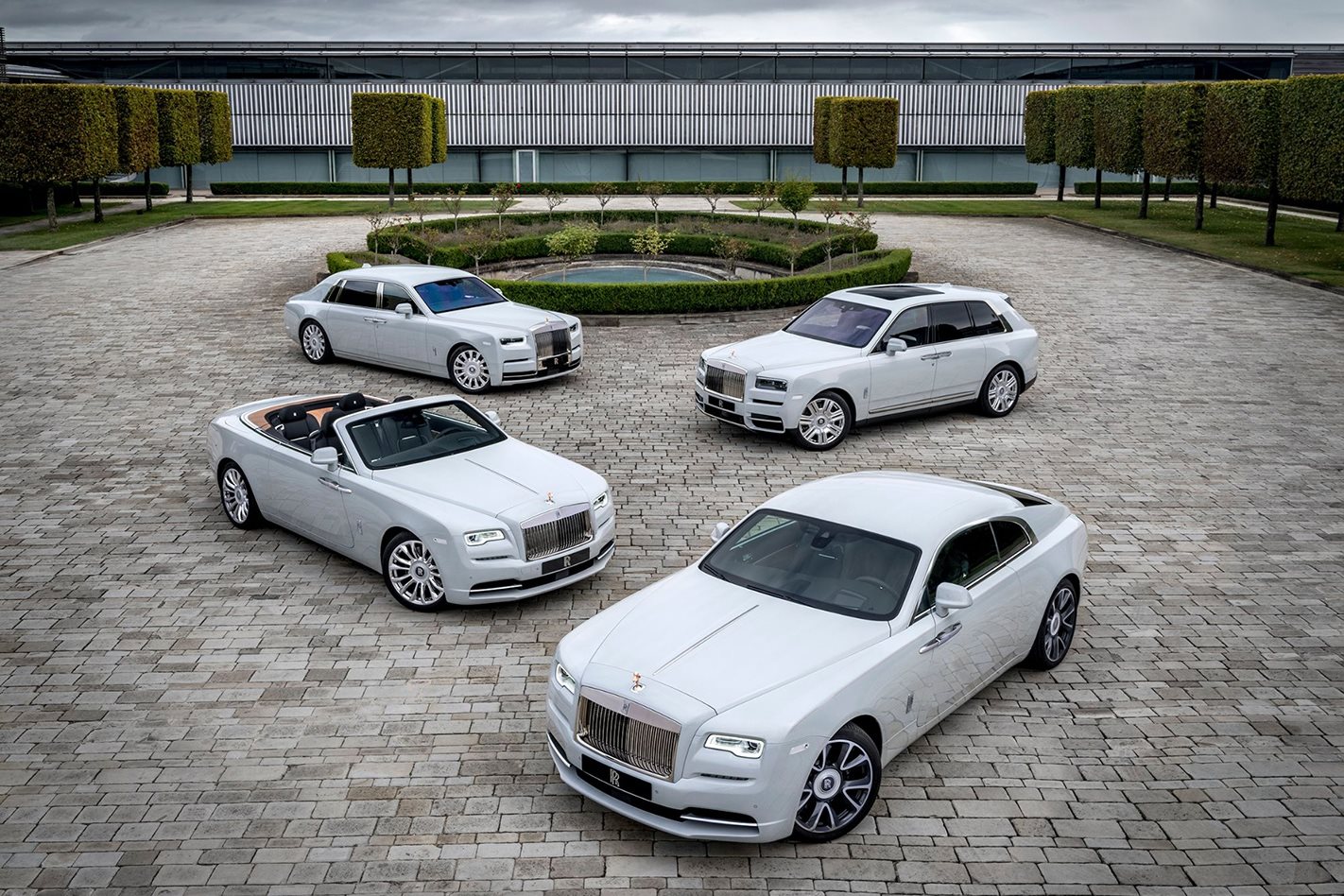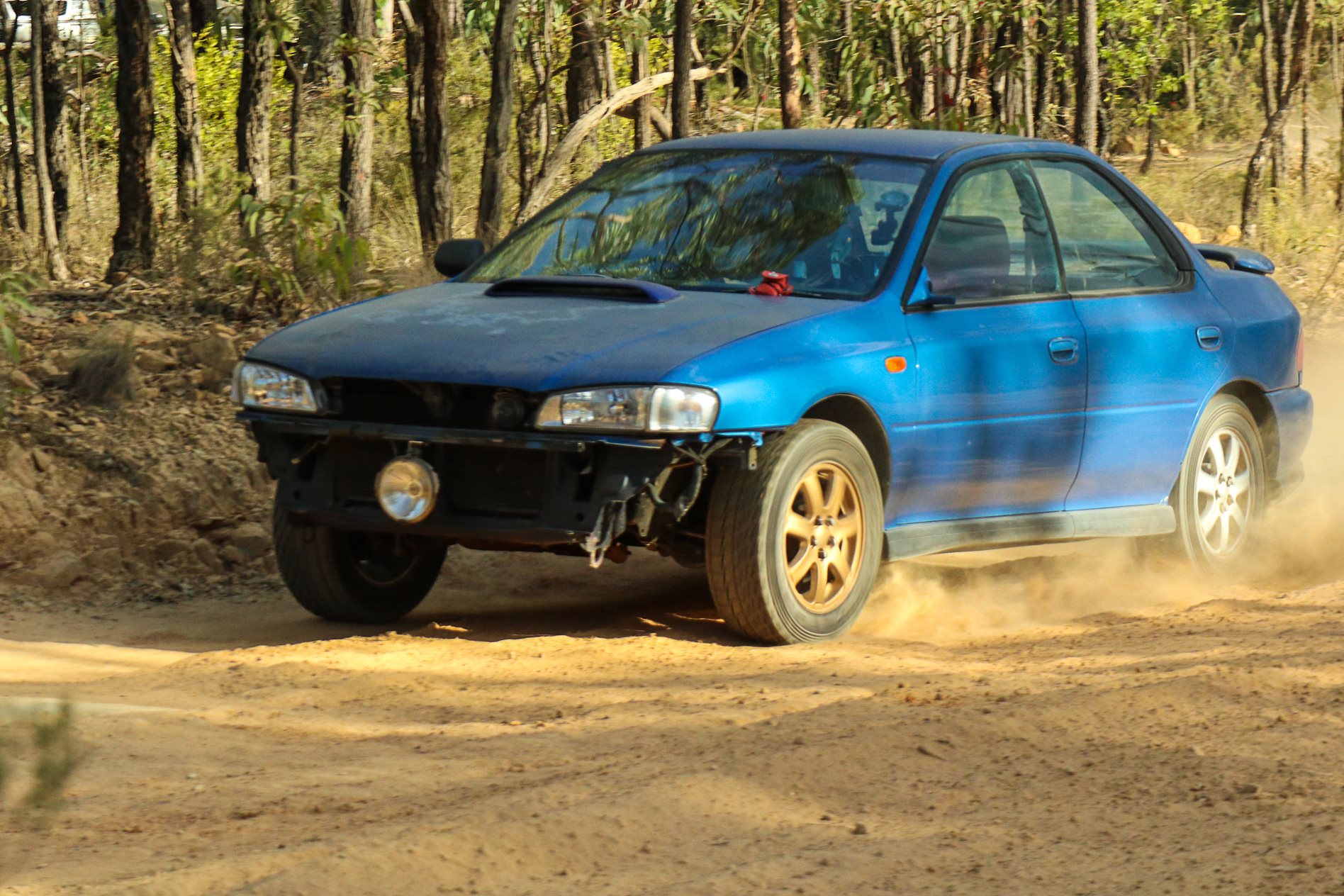
The message drops into to the voicemail inbox on a dreary Tuesday afternoon. “Hey mate, do you and Max want to come and do an autocross this weekend?” asks my buddy Dave, who’ll race anything and everything he can get his hands on.
Hah, I think a little bitterly. Who’s got that kind of motorsport money laying around? I figure it’s a nice idea, but shy of finding a spare thousand bucks down the back of the couch, I think we were sitting it out.
A message popped into my DMs. “Here’s the beast. A hundred bucks each and you’re in,” it read, accompanied by what could be best described as a pic of a Subaru Impreza that the Mad Max production team would have dismissed as being too dystopian.
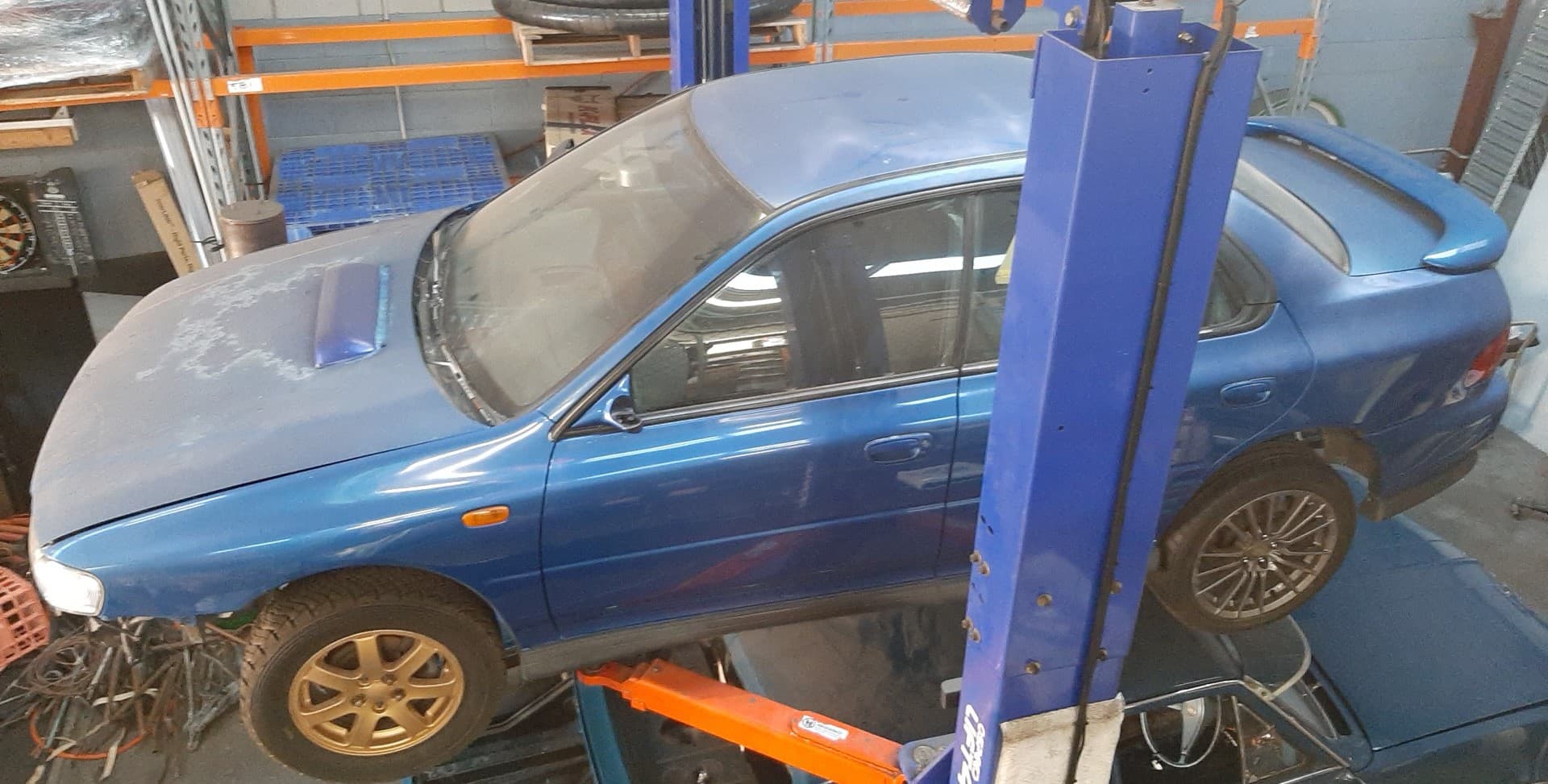
A hundred bucks? Once I’d supplemented my 17-year-old’s entry by half, I’d be up for $150 and some petrol money. Dinner was even laid on by the organisers! Total win!
There’s no doubt about it, motorsport is an expensive exercise, even at the entry-level. It’s a bloody shame because it’s insanely fun. However, there are still ways and means of scoring a motorsport fix without mortgaging the house.
One of those is autocrossing, which basically involves belting around a short dirt loop in a car that may or may not make it around a 30-second lap twice in a row.
Competitors sign on to a class based on their machinery – our 1996 Subaru Impreza RX is a ‘non-turbo AWD’, for example – and line up to do two flying laps of Colo’s short dirt course. Today we’ll actually be doing it in both directions; reverse direction (not gear!) during the day and regular direction at night. Yes, night.
It’s simply driver and machine versus the clock, and it’s the very definition of ‘run what ya brung’. In fact, the track at Colo Heights, not quite two hours west of Sydney, even has the facility to store your crapper on site for a modest fee.

Our Impreza owes Dave $500, and comes complete with not much. He poached a racing seat and harness from another car, and ‘borrowed’ (his words) an extinguisher from his mum’s kitchen. Crucially, our car is fitted with discarded rally tyres, which will give us valuable grip on the loose and dusty track.
I’m up first. “Oh, I haven’t actually tried the car out yet,” remarks Dave casually. “Good luck!” Wait… what?!

Max waits for his go
I roll down to the starting queue, a Holden ute with a canopy and extension ladder in front of me and a dishevelled Subaru Outback behind me. “Yeah, it’s my mum’s old car,” the high school-age Subaru driver tells me. “We crashed it last time we were here.”
She’s sharing the car with her dad; there are a lot of parent/sibling teams on hand, thanks to the fact a kid can get a CAMS licence at 14.
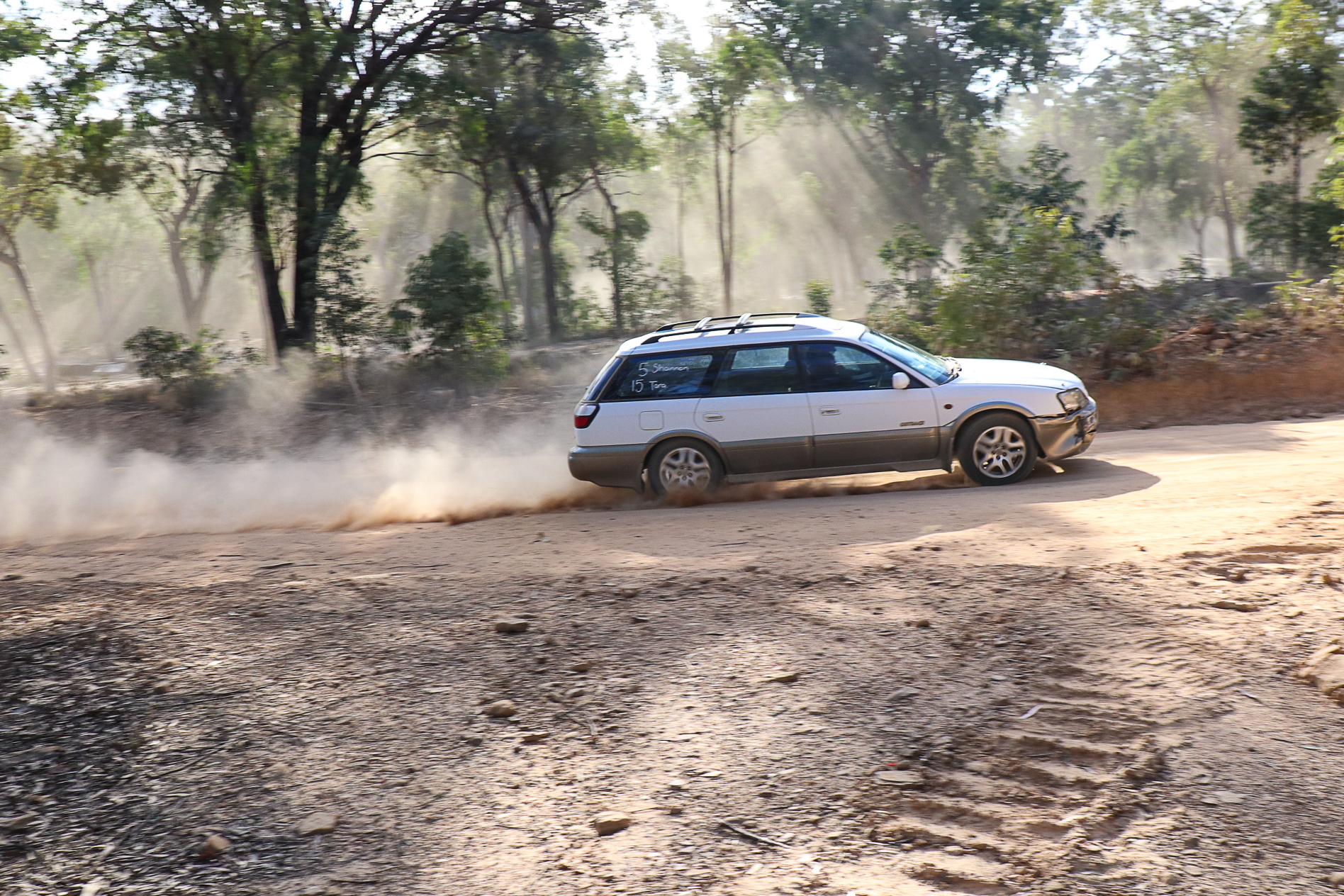
“Hey! Bring my car back! I need to go to work!”
Too soon I’m at the start line, and I get set to take off. “Make sure you only pass the finish line three times,” is the final instruction. Erm, where is that again?
The Impreza’s clutch is a bit how’s-yer-father, but the brakes work really well, there’s no traction control at all and the exhaust seems to be missing entirely as I charge up to a long left-hand downhill turn. The rally tyres find amazing amounts of grip and the car is surprisingly well behaved, and soon I’m having the absolute time of my life.
I almost spear off the track into the undergrowth when I slot fourth instead of second and slide into a dirt berm, but I recover sufficiently to record a top-ten time, which absolutely blows me away.
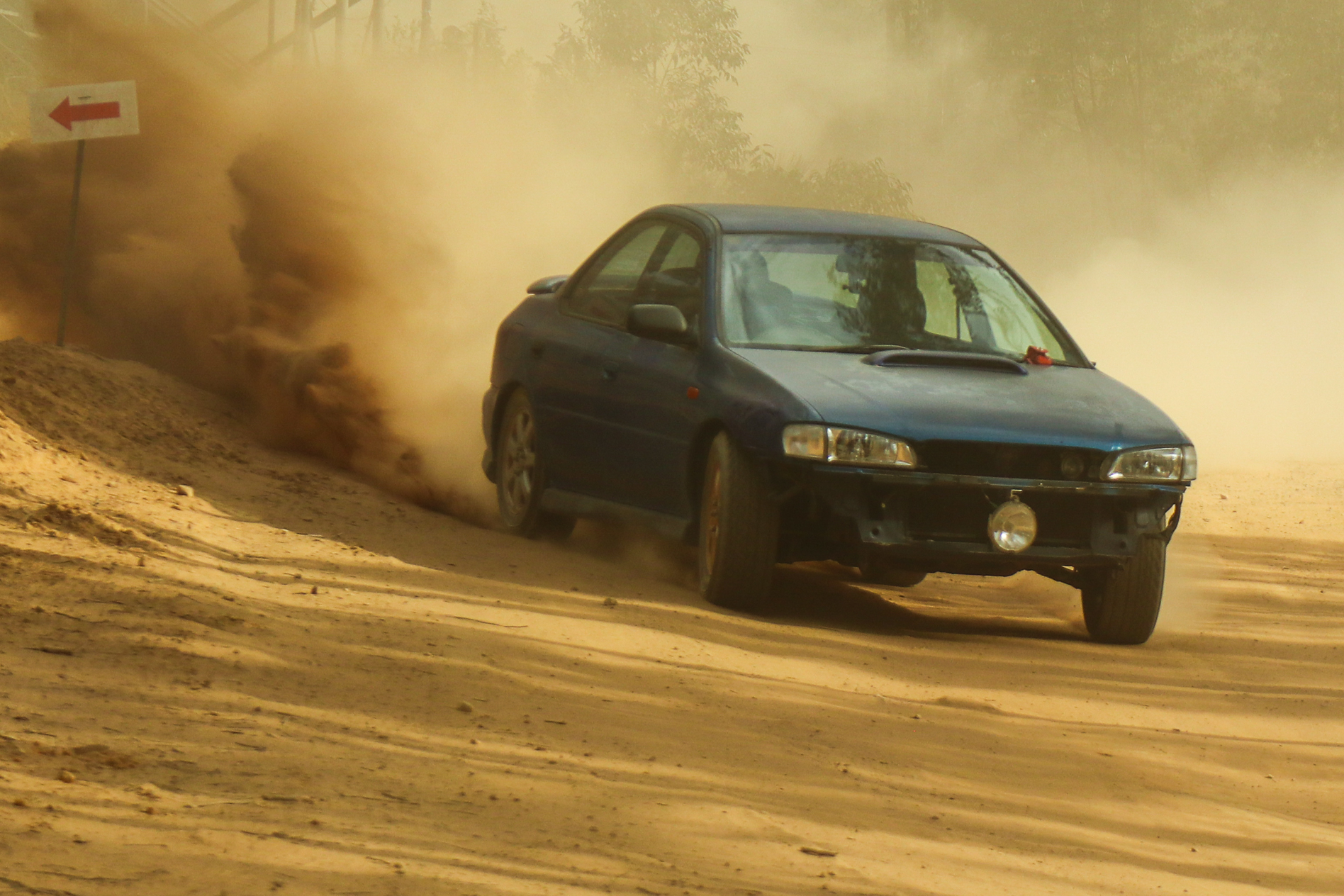
SKIDS!
Dave manages a huge spin during one run and demolishes a star picket on another, while junior-aged Max kills it, mere tenths from Dave and I’s times on most of his runs.
He did try and mow down some spectators in the infield when he misjudged a corner entry, but they didn’t seem to mind.
We power through the day and into the night, and the times tumble. The dust becomes a real drama at night, with not a breath of wind anywhere to clear the way, but overall, the day is a non-smashing success. Well, for most people.
Autocrosses are easy to find, and if our day was any indication, newbies are welcomed with open arms and loads of helpful advice. Beats a night out at a fancy restaurant hands-down, too.

Car owner Dave, laughing in disbelief that his car is still in one piece
How can I get involved?
If we want to build our own autocrosser – and I think we may just do that – there are a surprising number of cars out there that have been declared a write-off for the most minor things.
Hail damage is the main culprit, and offers the advantage of the car (usually) being in pretty good shape. We’re already eyeballing Mazda2s and Ford Fiestas for little more than $500. A set of second-hand rally tyres can be had for $200 or so – call it $400 if you need wheels.
Grab an extinguisher from a hardware store for twenty bucks, and figure out a way to add a secondary bonnet restraint – I saw elastic straps and a gate latch being used – and you’re good to go.

Safety is important, of course, and a surprisingly decent helmet can be bought for less than $200. Jeans and a long-sleeve cotton tee will complete your basic ensemble, and Vans-style flat sneakers are far more preferable to joggers – more feel through the pedals, you see.
I’m a big advocate of using as much safety as possible, and we added proper fireproof gloves to our kit. Motocross stuff isn’t fireproof, so I would not recommend it in the confines of a car.
If we were to get serious about the sport, I’d add basic rollover protection to whatever car we chose (say another $600) and invest in second-hand race seats and harnesses. Interestingly, you can buy ‘out of date’ gear from more serious motorsport competitors, who are required to update safety gear after a set number of years.

Rally tyres are a great addition
An out-of-date seat is much safer than the stocker in your beater, and unless they’ve been in a crash already, harnesses have very long lives outside of their motorsport body-sanctioned expiry date. Hint: keep them out of the sun when not being used.
Max and I already use HANS (Head And Neck System) restraints in other forms of racing, and it’s becoming a heck of a lot cheaper to buy a HANS device. Again, the classifieds are a good place to buy a once-used device from someone who tried the sport and didn’t like it.
Finally, a CAMS speed event licence and a club membership will cover the paperwork side of things for about $120 or so.



